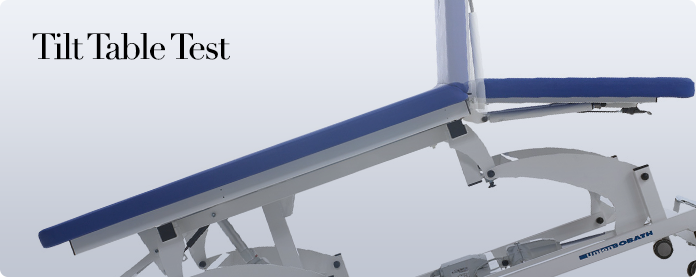
Make an appointment

Tilt Table Test
| Tilt table test (also called upright tilt table test) is used in the investigation of syncope or fainting. |
|
| The aim of the test is to reproduce the syncopal event or faint under continuous ECG recording and blood pressure monitoring. The test is used to confirm the diagnosis of vasovagal syncope or “the common faint”. |
|
| The patient has ECG electrodes and a blood pressure cuff placed on him and is strapped securely to a tilt table. The tilt table is a motorized table which can be inclined to any angle between zero and ninety degrees. Before starting the test, an intravenous cannula is inserted for the infusion of drugs and fluids if necessary. |
|
| The table is at first placed in a horizontal position. The ECG and blood pressure are recorded at time zero minutes. The table is then tilted to about 75 to 80 degrees to the horizontal and ECG and blood pressure are recorded every 5 minutes until time 30 minutes. If the patient starts to experience fainting or near fainting at any time, the ECG and blood pressure are recorded and the test is stopped by putting the table back to the horizontal position. |
|
| If the patient does not faint at the end of the 30 minutes, the patient is challenged with a spray of nitroglycerin via the mouth and the test is continued for another 15 minutes, or less if the patient faints before that. |
|
| A positive test is when the patient faints and there is either a drop in heart rate and/or a drop in blood pressure and the symptoms resolve and heart rate and blood pressure return to normal when the table is put back in the horizontal position. |
|
| If no fainting occurs by the end of the 45 minutes, the test is stopped and the result is a negative test. |


